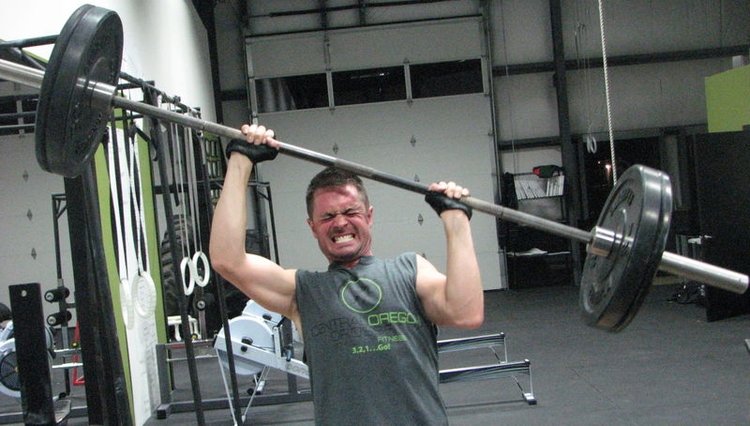Rates and risk factors of injury in CrossFit: A prospective cohort study
BY DR. KYLE BANGS
Nervous about getting injured during your journey with CrossFit? Well, more research says that the health and performance benefits of CrossFit outweigh the minimal risks.
A study published in early 2017 in The Journal of Sports Medicine and Physical Fitness followed 117 CrossFit participants for 3 months, to determine the injury risk of CrossFit, and identify the pre-existing risk factors among participants. The overall rates of injuries for CrossFit were found to be very low at about 2.1 injuries per 1000 training hours; comparable to many other forms of training including running, triathlons, and weightlifting and much lower than most amateur team sports. When injuries did occur, most involved the low back, knees, and wrists. They usually occurred during weight lifting movements, especially the squat but also deadlifting and overhead pressing exercises. Other studies have found the shoulders are more frequently injured with CrossFit, as well.

Are you at an increased risk for injury? The study suggests that any one of this factors may put you in greater risk of injury.
- Are you a man?
- Do you have previous injuries?
- Do you have asymmetries with the “Functional Movement Screen” OR “FMS”
By the way, did we mention Dr. Kyle is offering Functional Movement Screens at Function Performance.
Male athletes in this study (and in previous CrossFit injury studies) were found “very likely” to have an increased risk of injury compared to females regardless of other variables. Previous research has investigated this heightened male risk. They found that men are less likely to ask a coach for help during lifts, resulting in poor form, or progressing too quickly to higher loads.
Participants with a prior injury (within the last 6 months) was another strong risk factor for increased likelihood of injury. This is no surprise as injuries and pain can alter the way the body moves, even after the injury subsides. Often times the factors that lead one to get injured are not adequately addressed during the healing and rehabilitation phases after an injury. This may have something to do with the next risk factor as well.

The last factor that could lead to an increased risk of injury was found to be the number of asymmetries on the Functional Movement Screen (FMS). The FMS is a short assessment of your quality of movement and is able to show where your personal movement quality falls short. FMS screening scores have been shown to be associated with injury risk in several sports and activities, especially when athletes demonstrate asymmetry in movement.
Bottom Line? When considering the evidence, CrossFit is considered as safe as most fitness related activities. What can you do to reduce the risk of injury even further?
- Focus on the quality of your lifts before you start pushing for number (weight/repetition) goals. If you’re unsure about a movement or lift, ask the coach for some 1 on 1 help with it before attempting to load it. If you ever think “I wonder if I’m doing this right,” then it’s time to ask for some feedback.
- If you’ve had an injury in the past, get it evaluated by a healthcare practitioner that you trust. Pain alters your quality of movement, and those movement changes can persist long past an injury is healed.
- Have your movement screened. An FMS screen can be a quick way to determine how your body moves and will find the big differences between your right and left sides that could increase your risk of injury. With an FMS screen, you’ll get a few corrective exercises that you can work into a warm-up to start addressing these issues on your own.
REFERENCES
Hak, P. T., Hodzovic, E., & Hickey, B. (2013). The nature and prevalence of injury during CrossFit training. Journal of Strength and Conditioning Research, doi:10.1519/JSC.0000000000000318 [doi]
Klimek, C., Ashbeck, C., Brook, A. J., & Durall, C. (2017). Are injuries more common with CrossFit training than other forms of exercise? Journal of Sport Rehabilitation, , 1-17. doi:10.1123/jsr.2016-0040 [doi]
Moran, S., Booker, H., Staines, J., & Williams, S. (2017). Rates and risk factors of injury in CrossFit: A prospective cohort study. The Journal of Sports Medicine and Physical Fitness, doi:10.23736/S0022-4707.16.06827-4 [doi]
Weisenthal, B. M., Beck, C. A., Maloney, M. D., DeHaven, K. E., & Giordano, B. D. (2014). Injury rate and patterns among CrossFit athletes. Orthopaedic Journal of Sports Medicine, 2(4), 2325967114531177. doi:10.1177/2325967114531177 [doi]



